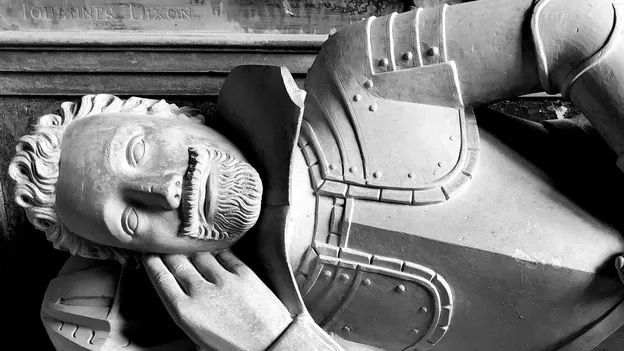Secrets, Symbols, and Shadows: The Enduring Conspiracy Theories of the Knights Templar
- Templar Webmaster

- Jul 18
- 3 min read
Few medieval organisations have captured the imagination of history enthusiasts and conspiracy theorists alike quite like the Knights Templar. Founded in 1119 to protect pilgrims in the Holy Land, the Order quickly rose to extraordinary power—amassing land, wealth, and influence across Europe. But it’s not just their meteoric rise or dramatic downfall in 1307 that intrigues people. It’s what might have happened after.

The Knights Templar of England & Wales are dedicated to exploring both the facts and the fascination behind the medieval Order. Today, we delve into some of the most enduring and curious conspiracy theories about the Knights Templar—and why these stories continue to thrive centuries after the last Templar was officially disbanded.
The Holy Grail Guardians
Possibly the most famous Templar conspiracy theory suggests the Order was the secret guardian of the Holy Grail—the cup used by Christ at the Last Supper. Some legends claim the Templars found the Grail beneath the ruins of Solomon’s Temple in Jerusalem and carried it back to Europe for safekeeping.
Whether the Grail is a literal object, a metaphor for divine bloodlines, or something more mystical, authors from Dan Brown to historians like Michael Baigent have kept this theory alive. While there’s no hard evidence, the tantalising possibility continues to stir debates among believers and skeptics alike.
Templars and Freemasonry: A Hidden Bloodline?
Another popular theory draws a connection between the suppressed Templars and the rise of Freemasonry in the 17th and 18th centuries. Some Masonic rituals bear symbolic similarities to those of the Templars, and certain Masonic bodies—like the “Knights Templar” degree in the York Rite—explicitly reference the Order.
Did fugitive Templars survive their persecution and go underground, preserving their rites and secrets through Masonic channels? Or are these links later inventions meant to imbue Freemasonry with an aura of medieval mystique? Officially, the United Grand Lodge of England and Masonic Knights Templars claim no historical links to the medieval Knights Templar. But, the jury is still out for many.
The Templar Treasure: Lost or Hidden?
From the mysterious disappearance of their vast wealth to rumours of hidden vaults and coded maps, the “lost treasure of the Templars” is a cornerstone of modern legend. Some believe that when King Philip IV of France moved to arrest the Templars in 1307, a portion of their treasure was smuggled away—perhaps to Scotland, Portugal, or even the New World.
Oak Island in Nova Scotia has long been linked to this theory, with some believing that a buried Templar hoard lies beneath the infamous Money Pit. While no conclusive proof has ever emerged, the search for Templar gold remains a tantalising mystery.
The Curse of the Last Grand Master
When Jacques de Molay, the last Grand Master of the Templars, was burned at the stake in 1314, legend says he cursed King Philip IV and Pope Clement V, calling them to meet him before God within a year. Strangely, both men died within months of his execution.
Coincidence? Divine retribution? Or simply the poetic flourish of later chroniclers? Whatever the truth, the so-called “Curse of the Templars” added a mystical aura to the Order’s tragic end—and gave rise to centuries of speculation.
Modern-Day Templars: The Secret Continues?
Today, many organisations claim inspiration from the medieval Templars—some as fraternal orders, others as charitable groups. A few go further, suggesting they are the direct descendants of the original Order, continuing a sacred mission in secret.
Here at The Knights Templar of England and Wales, we honour the historical legacy of the Knights Templar, explore the symbolism and speculation that still surround them, and aim to uphold their ideals of chivalry and charity. Whether you view the Templars as noble warriors, esoteric guardians, or the victims of a medieval smear campaign, one thing is clear: their story is far from over.
Conclusion: Where History Meets Mystery
Conspiracy theories thrive where history fades into shadow. With secret rituals, lost treasures, and alleged connections to everything from the Grail to modern Freemasonry, it’s no wonder the Knights Templar remain a focal point for such intrigue.
At The Knights Templar of England and Wales, we’ll continue to attempt to separate fact from fiction while respecting the mystery that gives the Order its eternal allure. After all, every great legend begins with a grain of truth—and perhaps, just perhaps, the Templars left more behind than we know.
Have a theory of your own? Join the discussion in the comments below, and don’t forget to explore our blog archives for more on the Templar legacy. And if you want to join our Order, check out the “join us” page.




Comments